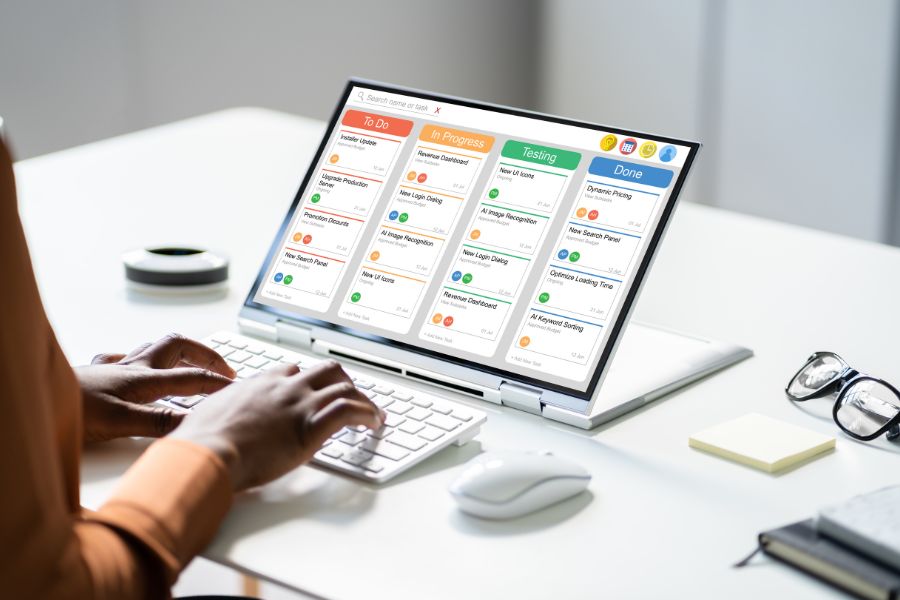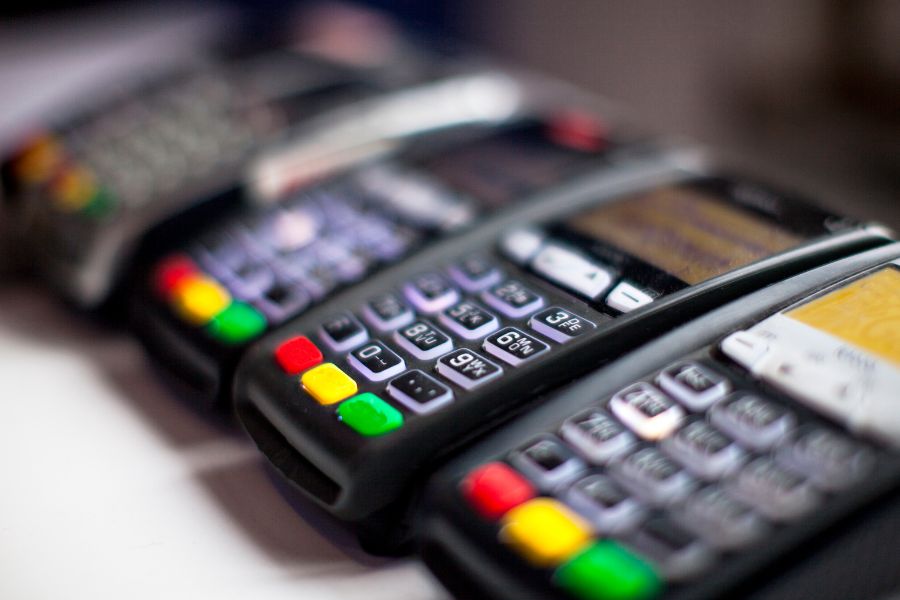Customer experience analytics turns interactions, behavior, and feedback into actionable strategies – that’s how it works these days. Tech giants Apple and Samsung exemplify how leveraging these analytics refines customer journeys, enhances satisfaction, and drives brand loyalty. By examining customer experience analytics use cases from these leaders, businesses can learn to innovate, improve service delivery, and stay competitive. This blog explores Apple and Samsung’s practices, providing a roadmap for integrating analytics into your strategy to exceed customer expectations.
Understanding Customer Experience Analytics
Customer experience analytics empowers businesses to understand and enhance interactions with customers across various touchpoints. Companies gain deep insights into customer behavior, preferences, and sentiment by leveraging advanced data analytics techniques. This process involves collecting and analyzing data from multiple sources such as customer feedback, online interactions, purchase history, and social media engagement.
The insights derived from customer experience analytics help organizations identify patterns, trends, and pain points in the customer journey. This information is invaluable for optimizing products, services, and overall customer satisfaction. Moreover, it aids in making informed decisions that lead to improved operational efficiency, increased customer retention, and higher profitability.
Key components of customer experience analytics use cases often include sentiment analysis, predictive analytics, text mining, and machine learning algorithms. These tools enable businesses to react to customer needs in real-time and anticipate future trends and behaviors.
In essence, customer experience analytics transforms raw data into actionable intelligence, empowering companies to deliver personalized and seamless experiences that resonate with their customers. As businesses strive to differentiate themselves in competitive markets, the strategic application of customer experience analytics becomes essential for driving growth and fostering long-term customer relationships.
Apple Customer Experience Analytics
Apple Inc. is probably one of the pioneering companies when it comes to understanding customer experience. It exemplifies excellence in customer experience through its strategic use of analytics across various touchpoints.
By meticulously analyzing customer data, Apple tailors its products, services, and retail experiences to meet and exceed customer expectations.
Apple’s commitment to customer experience analytics use cases is evident in several key areas:
Use case 1: Personalized customer engagement
Apple leverages data analytics to personalize customer interactions across its ecosystem of devices and services.
By analyzing customer behavior, preferences, and purchase history, Apple tailors recommendations and communications. This personalization enhances customer satisfaction and drives cross-selling and upselling opportunities.
Use case 2: Retail experience optimization
The Apple Store exemplifies a carefully curated retail experience where analytics play a pivotal role.
Apple collects data on store traffic patterns, customer interactions with products, and service experiences. This data optimizes store layouts, staffing levels, and product displays to ensure a seamless and enjoyable shopping experience.
For instance, Apple adjusts the placement of popular products based on analytics insights and integrates digital experiences within physical stores to engage customers more effectively.
Use case 3: Apple store experience
The Apple Store stands as a paragon of customer-centric retail design.
By integrating analytics into store operations, Apple creates a seamless shopping experience. Data on foot traffic, customer dwell times, and purchase patterns inform store layouts and staffing levels. This ensures personalized attention and assistance for each customer, enhancing overall satisfaction.
In 2017, Apple redesigned its retail stores into “Town Squares,” emphasizing community engagement and personalized experiences. Analytics played a crucial role in this transformation. By analyzing customer behavior within these new spaces, Apple optimized layouts and services.
For example, data on customer interactions with in-store tech support and workshops guided the scheduling and content of these sessions, enhancing customer engagement and knowledge-sharing.
Beyond these specific use cases, Apple also leverages predictive analytics to foresee customer needs and trends. By employing machine learning algorithms, Apple can anticipate future behaviors and preferences, ensuring that their product development and customer service strategies remain ahead of the curve.
Apple’s approach to customer experience analytics is holistic, encompassing the entire customer journey from initial contact to post-purchase support. This comprehensive strategy not only improves customer satisfaction but also fosters long-term loyalty and advocacy.
Samsung Customer Experience Analytics
As a par-to-par competitor with Apple, Samsung Electronics ensures they are not one step behind Apple. It employs robust customer experience analytics to enhance its global presence and product offerings. Through data-driven insights, Samsung adapts its strategies to meet diverse consumer needs effectively.
Use case 1: Product development and market insights
Samsung uses customer experience analytics to gather insights into market trends and consumer preferences.
By analyzing customer feedback and purchasing patterns, Samsung identifies emerging trends and adjusts its product lineup accordingly. This approach ensures that Samsung remains competitive and responsive to evolving consumer demands.
Use case 2: Digital and retail integration
Samsung integrates analytics across digital platforms and retail outlets to provide a seamless customer journey.
By tracking online behavior, Samsung tailors digital marketing efforts and online shopping experiences to individual preferences. In-store analytics help Samsung optimize store layouts, product displays, and staffing to enhance customer satisfaction and sales conversion rates.
Use Case 3: Immersive Customer Experiences
Samsung’s Galaxy Studio experiential spaces worldwide exemplify its commitment to immersive customer experiences driven by analytics. These pop-up events showcase Samsung’s latest technology in interactive settings.
By analyzing visitor interactions and feedback, Samsung refines future event planning and product showcases. This ensures that each experience aligns with customer expectations and enhances brand perception.
Samsung also leverages predictive analytics and machine learning to anticipate future consumer needs and trends. By understanding potential shifts in the market, Samsung can proactively develop products and services that meet forthcoming demands. This forward-thinking approach helps Samsung stay ahead of competitors and continually innovate.
Moreover, Samsung’s commitment to customer experience analytics extends to after-sales support. By analyzing data from customer service interactions, Samsung identifies common issues and areas for improvement, leading to enhanced customer support and satisfaction.
Both Apple and Samsung demonstrate how customer experience analytics can elevate brand loyalty, drive innovation, and optimize operational efficiencies. By leveraging data-driven insights, these tech giants not only meet but exceed customer expectations, setting a benchmark for others in the industry.
Technologies that Support Apple and Samsung’s Customer Experience Strategies
Both Apple and Samsung utilize advanced technologies to enrich their customer experience strategies, integrating seamless digital interactions with innovative retail environments.
Apple’s Technologies
- iOS and macOS Ecosystem
Apple’s ecosystem of devices, including iPhones, iPads, MacBooks, and Apple Watches, ensures a cohesive user experience. Features like Handoff, iCloud synchronization, and AirDrop enhance usability and continuity across devices.
- Apple Retail Store Innovations
- Apple Store App: Allows customers to schedule Genius Bar appointments, check product availability, and make purchases directly from their mobile devices, enhancing convenience and supporting a streamlined in-store experience.
- iBeacon Technology: Utilizes Bluetooth Low Energy (BLE) to provide location-based services within Apple Stores. iBeacons deliver personalized notifications, product information, and navigation assistance to enhance the customer journey.
- Apple Pay: Facilitates secure and convenient transactions using NFC technology. Apple Pay supports contactless payments in-store, in-app purchases, and online transactions, reducing friction at checkout.
Samsung’s Technologies
- Samsung Galaxy Ecosystem
Samsung integrates its Galaxy ecosystem across smartphones, tablets, wearables, and smart home devices. This interconnected ecosystem ensures seamless connectivity and interoperability, enhancing the user experience through shared data and features.
- Samsung Digital Platforms
- Samsung.com: Samsung’s official website serves as a central hub for product information, online purchases, and customer support. The website features responsive design, personalized recommendations, and a user-friendly interface to enhance online shopping experiences.
- Samsung SmartThings: Powers Samsung’s smart home ecosystem, allowing users to control and monitor compatible devices from a single platform. SmartThings enhances convenience and connectivity for users invested in home automation and IoT solutions.
Aside from the above tactics, both Apple and Samsung utilize advanced POS (Point of Sale) systems in their retail environments to streamline transactions and enhance customer service. These systems support various payment methods and integrate with inventory management systems to optimize operational efficiency.
ConnectPOS is a comprehensive POS solution that enhances retail operations by offering real-time inventory management, omnichannel capabilities, and integration with customer relationship management (CRM) systems. By supporting seamless transactions and personalized customer interactions, ConnectPOS significantly improves overall customer satisfaction and loyalty.
FAQs: Customer Experience Analytics Use Cases
- What are customer experience analytics, and why are they important for businesses like Apple and Samsung?
Customer experience analytics involves collecting and analyzing data from various customer touchpoints to gain insights into customer behavior, preferences, and sentiment.
For businesses like Apple and Samsung, these analytics are crucial because they help tailor products, services, and interactions to meet customer expectations, thereby enhancing satisfaction, loyalty, and overall business performance.
- How do Apple and Samsung use customer experience analytics to personalize customer engagement?
Apple and Samsung leverage customer experience analytics to personalize interactions by analyzing customer behavior, preferences, and purchase history. Apple uses this data to provide tailored recommendations and communications across its ecosystem of devices, while Samsung uses it to customize digital marketing efforts and online shopping experiences, ensuring each customer receives relevant and personalized content.
3. What technologies do Apple and Samsung use to support their customer experience strategies?
Apple utilizes technologies such as its iOS and macOS ecosystem, the Apple Store App, iBeacon technology, and Apple Pay to create a seamless and cohesive user experience. Samsung employs its Galaxy ecosystem, Samsung.com, and the SmartThings platform to integrate digital and retail experiences, enhancing user connectivity and convenience.
4. How do POS systems like ConnectPOS enhance the customer experience for electronic stores?
POS systems like ConnectPOS streamline transactions and improve customer service by supporting various payment methods and integrating with inventory management systems. ConnectPOS offers real-time inventory management, omnichannel capabilities, and CRM integration, enabling seamless transactions and personalized customer interactions, ultimately boosting customer satisfaction and loyalty.
Conclusion
In sum, the integration of customer experience analytics use cases has proven to be a pivotal strategy for industry leaders like Apple and Samsung in enhancing customer satisfaction, driving innovation, and maintaining competitive advantage. For businesses aspiring to emulate this success, you can apply customer experience analytics use case of Apple and Samsung above. Platforms like ConnectPOS exemplify how technology can support these efforts, offering comprehensive solutions to streamline retail operations and enhance customer interactions.
Contact us today to discover how ConnectPOS can transform your retail operations and elevate customer satisfaction.
ConnectPOS is a all-in-one point of sale solution tailored to meet your eCommerce POS needs, streamline business operations, boost sales, and enhance customer experience in diverse industries. We offer custom POS with features, pricing, and plans to suit your unique business requirements.




